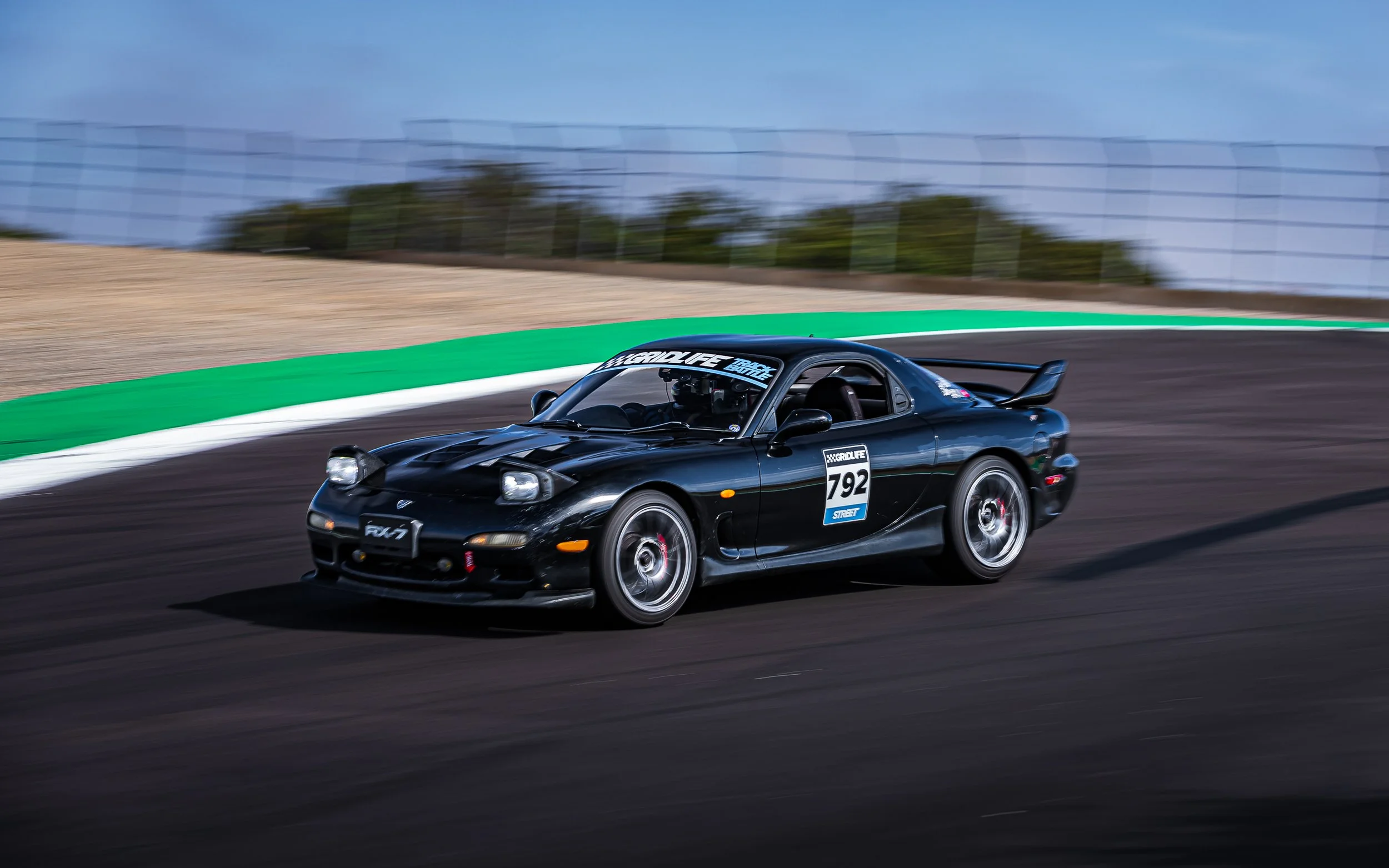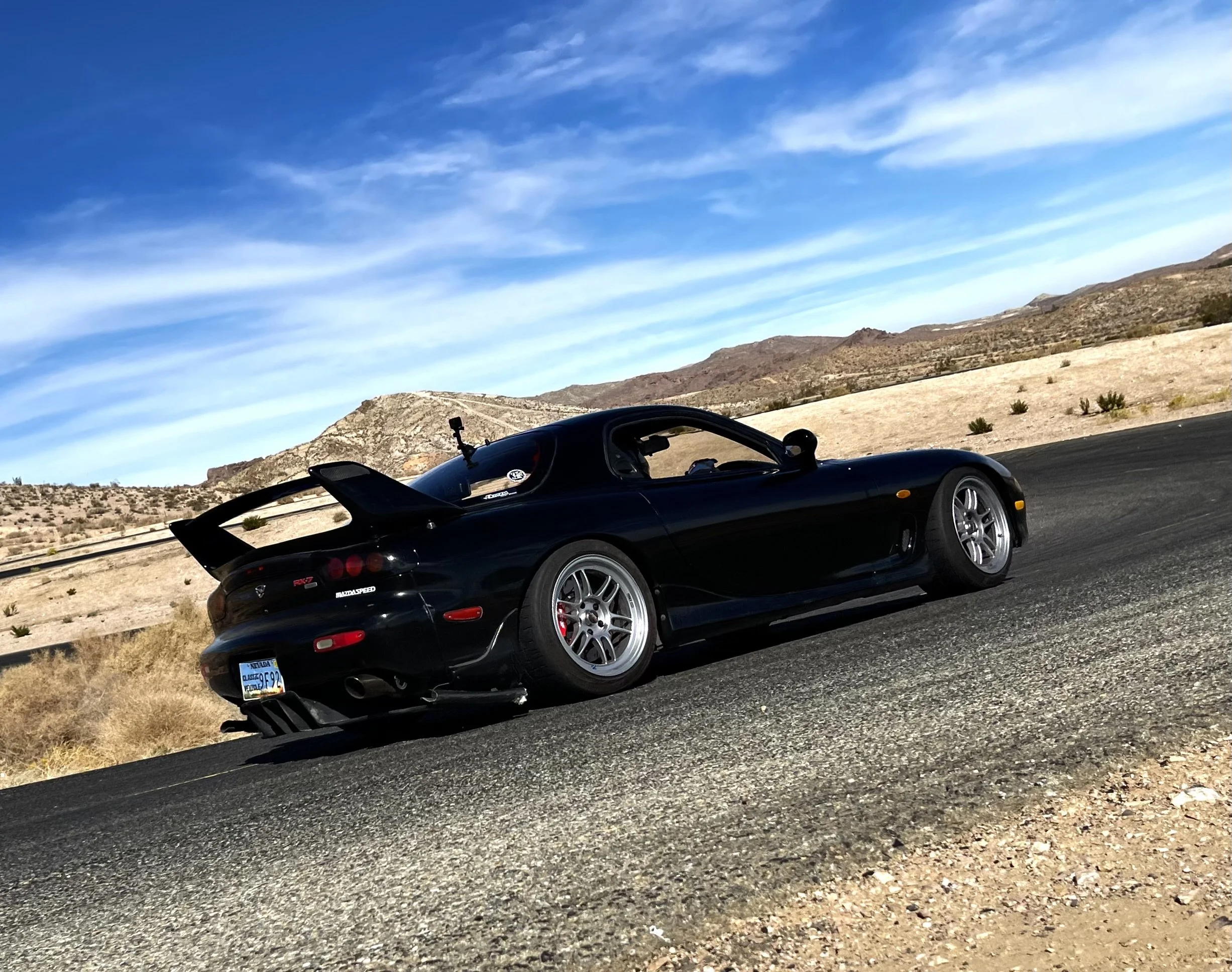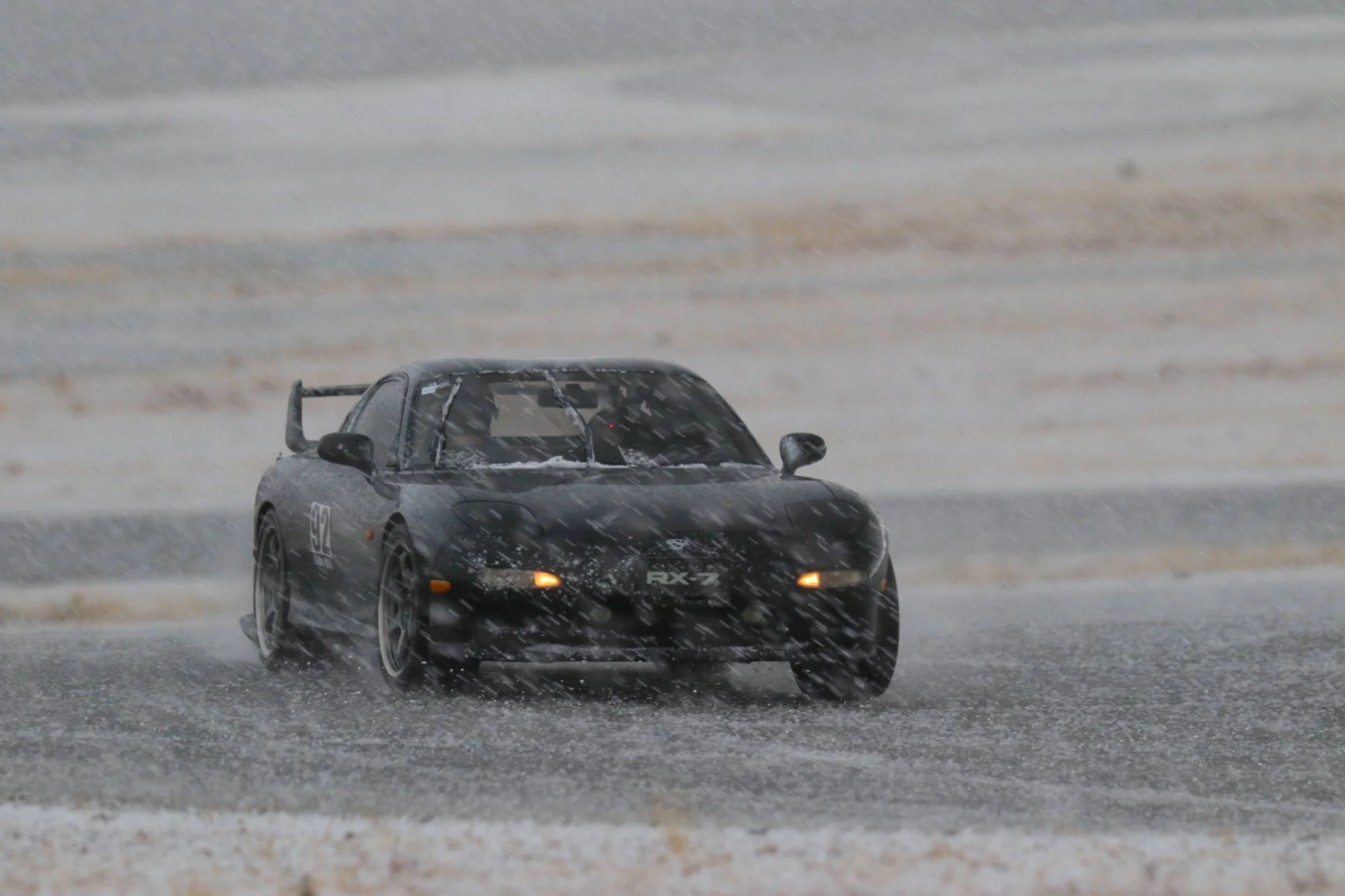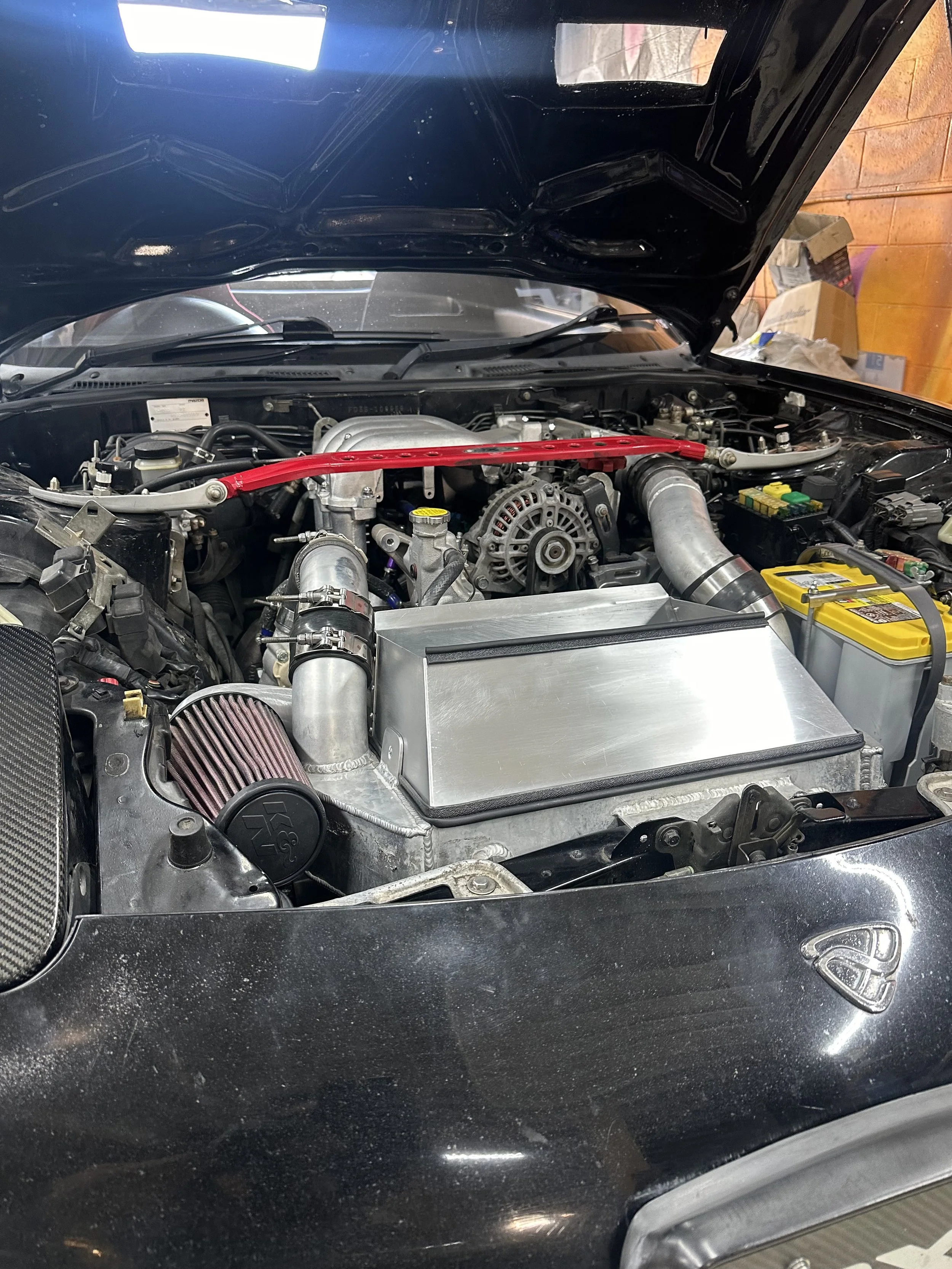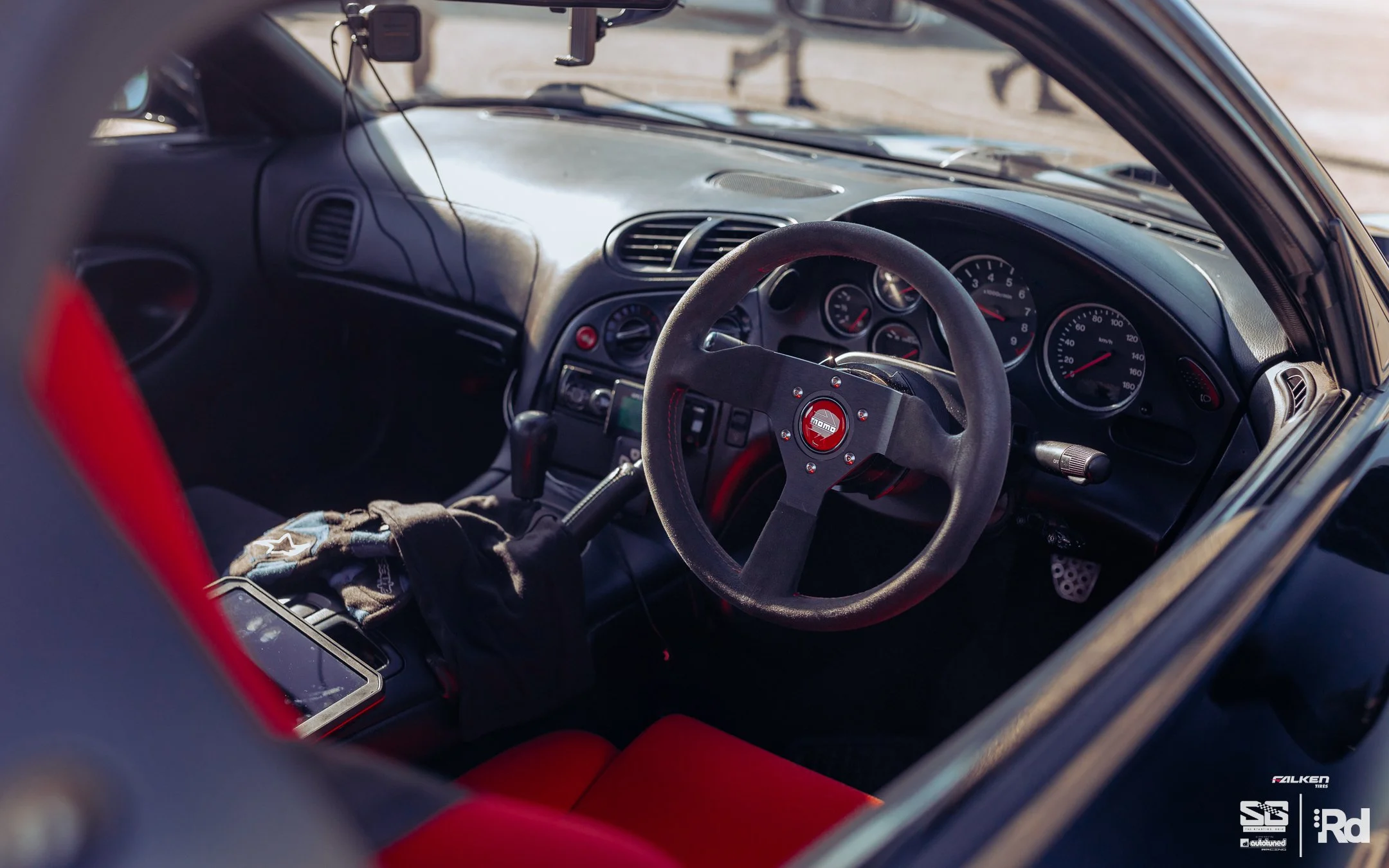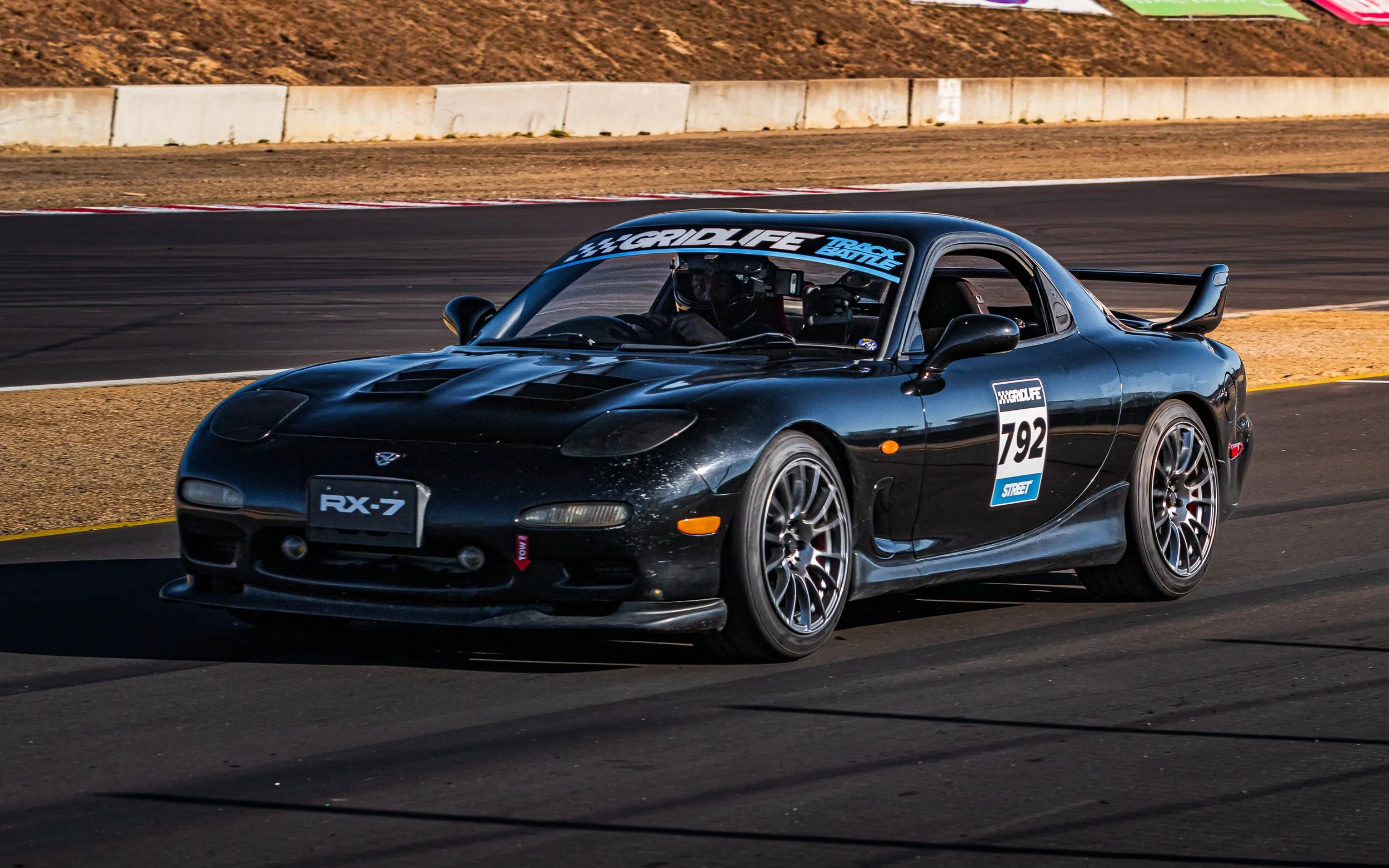Rafael’s FD3S RX-7: Pipe Dream
Listening to the jazzy muzak in Gran Turismo’s lobby and scrolling through the various cars available, Rafael Guerrero found the oddball that piqued his interest. “It was always the RX-7. There was nothing else in production with a rotary engine then,” he said.
As a young boy, Rafael’s dream of owning a sleek sports car was just that: a dream. “We grew up very poor – single mother, no car. It was just a pipe dream then.”
But fate had other ideas. Five years later, he made one his own. Taking advantage of the accessible early 2000s market for glory-era Japanese cars which are fetching a mint nowadays, he found a second-generation RX-7, a base model GXL, for $700 and used it to deliver pizza – it sounds like a scene from a cartoon. With a little money saved from his work and a quick flip of another pizza slice-shaped RX-7 giving him the means to make an upgrade, he soon bought a Turbo II – the turbocharged version of the second-gen – and began tracking it.
After getting his feet wet and learning how much he valued ergonomics in a track car, he had a chance to make another upgrade into a slightly swifter, much softer-shaped version of the RX-7 – the one he’d been coveting for so long. His first third-gen came to him with a whole host of problems, but its $4,000 price made those easier to look past.
The teething process was predictably painful. “You really can’t go cheap with the maintenance. I tried studying some of the forums and doing the work myself, but I decided to take the car to a reputable rotary shop instead because I knew the headache I was in for if I screwed it up.”
Rafael knew enough by then to defer to the specialists when it came to fixing his new purchase. Lucky 7 Racing provided him with a car that became a reliable daily that ran for years without issue, save for a failed alternator. It required him to spend twice what he paid for the car, but he didn’t mind. “If you want to drive one of these, you don’t get to cut corners,” he added.
When the opportunity to buy a restaurant came his way, he had to sell off whatever he had to fund his new business, including his beloved FD. The gamble paid off, and a year later, his restaurant had afforded him the chance to buy another – this one much nicer than the first.
The ‘92 RX-7 Type R he imported was still a bargain at $11,000, but being cleaner than the first, he felt more comfortable modifying this one for track work, even if the threat of a misshift was increased with this being a right-hand drive model.
The Type R trim offers twin oil coolers, a Torsen LSD, cloth seats, as well as front and rear strut bars, making it the clear choice for track work.
Power FC ECU limits his power output currently. A modern standalone – a plan for the near future – should improve that.
The inherent problem with this car has always been excessive oversteer, which he’s sought to minimize with a small list of thoughtful upgrades. Retaining the rear bar has settled the rear somewhat, as did installing a Mazda Motorsports-style front bar and raising the ride height for better suspension geometry.
Using a set of custom one-ways from Shaftworks USA with 18kg and 16kg springs front and rear, respectively, he was able to get the desired urgency from the front end.
To rectify some of the turbo rotary’s cooling issues, he opted to scrap the complicated sequential twin setup entirely and replace it with a small, carefully selected single turbocharger. As the car would spend a lot of time at relatively technical tracks like the Streets of Willow, he wanted to optimize throttle response and keep power levels restrained.
The BorgWarner EFR 7670 – a trick turbo aimed at road course usage – uses a titanium aluminide turbine wheel with about half the mass of a similarly sized inconel wheel. The improvement in spool, as well as its added heat capacity, has helped immensely.
Outright power at 302 whp is not much higher than the factory power output, but the engine response has improved considerably. Thankfully, that engine only has to push roughly 2,900 pounds around.
To keep the 13B-REW happy, one needs to stay on top of cooling. “Overheat it once and it’s done,” he warned. The most notable improvement in that department is a custom duct which funnels air into the v-mounted Greddy intercooler and out the vents in the hood.
This straightforward, capable package may surprise some people with its lap times. At Streets of Willow, the direction change has helped Rafael manage a 1:19.8 – somewhat less surprising given its weight. It’s the complete package, though – bolstered by a friendly disposition, the immediate power delivery and the ample traction have made it possible for Rafael to keep taking tiny bites through the sections of track where keeping the platform balanced is vital. Not always an easy ask with a turbocharged rear-drive car, but this one’s been made into something that is engaging and so eager to eke out the smallest bits of speed in the trickiest bits of track.
Even better, it works well enough to be called dependable. “I drove six hours to Laguna Seca, drove three days there, and then six hours home without any issues.”
So much for the rotary’s reputation. As mentioned earlier, he can’t take credit for its robustness. “If you want to make it last, you need to keep an eye on the car at all times, you need to spend more, and you ought to leave maintenance to the pros.”

